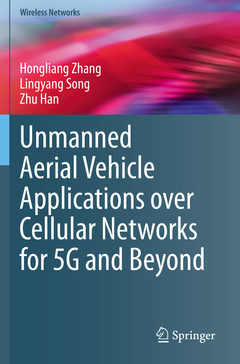Description
Unmanned Aerial Vehicle Applications over Cellular Networks for 5G and Beyond, 1st ed. 2020
Wireless Networks Series
Authors: Zhang Hongliang, Song Lingyang, Han Zhu
Language: English
Subjects for Unmanned Aerial Vehicle Applications over Cellular...:
Approximative price 137.14 €
In Print (Delivery period: 15 days).
Add to cartPublication date: 12-2020
221 p. · 15.5x23.5 cm · Paperback
Approximative price 137.14 €
In Print (Delivery period: 15 days).
Add to cartPublication date: 12-2019
221 p. · 15.5x23.5 cm · Hardback
Description
/li>Contents
/li>Biography
/li>Comment
/li>
Provides an introduction to the UAV paradigm, from 5G and beyond communication perspective, which currently has attracted plenty of attentions from both academia and industrial sides
Introduces the key methods, including optimization, game, and graph theory, for UAV applications, in a comprehensive way
Discusses the state-of-the-art for cellular network assisted UAV sensing, and many examples are illustrated in detail to provide a wide scope for general readers




